Green Space
A concept in the University Master Plan 2008 is creating a “dream urban university” that is “A Promise Place to Live and Learn with Nature” by creating a suitable environment for living and studying in an environment conducive to learning with physical characteristics that harmoniously responds to social and environmental conditions. A university is like a second home, and is a spiritual center for all Mahidol University members. There are three factors that contribute to such development: social, physical, and environmental developments.
The main concept in creating a university that supports learning with nature is Green University. The main physical development concept is to make the university look and feel like an arboretum. This arboretum concept will incorporate the use of shade, while encouraging a clean, pollution-free environment. This will further increase efficiency through a landscape that is in harmony with the natural environment, as well as open and green spaces for recreation and natural environmental learning activities. This should help to promote energy conservation and renewable energy, allowing Mahidol University students and staff to live happily in Salaya while improving their quality of life and being environmentally conscious.
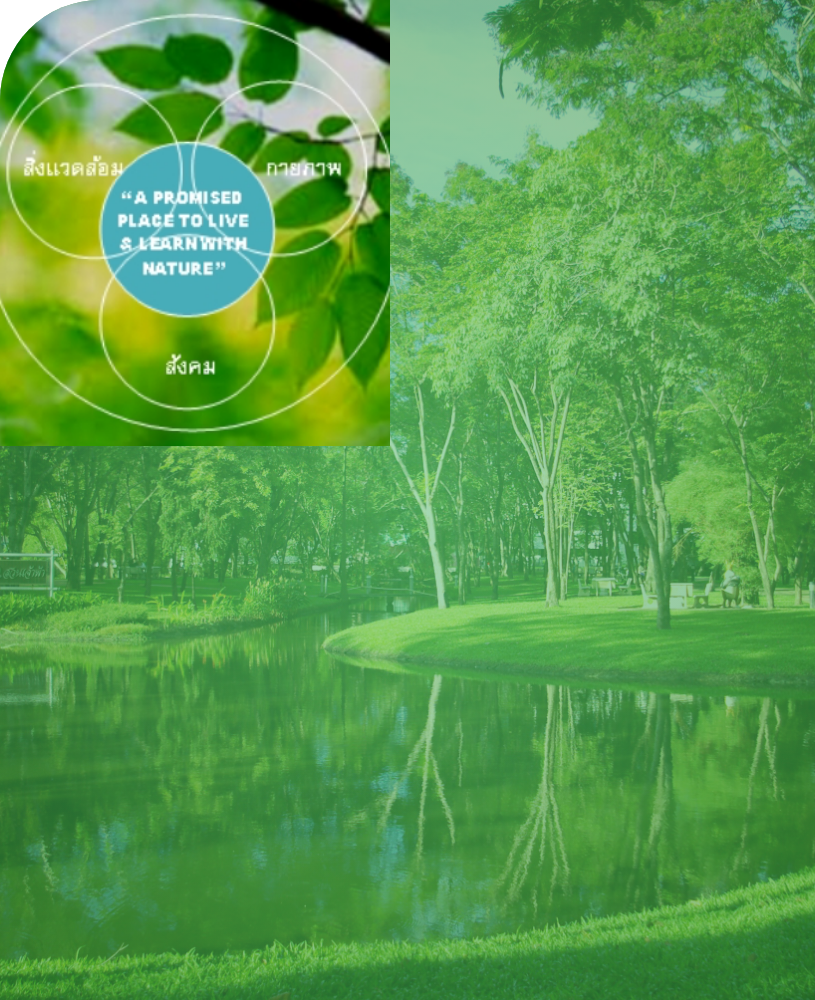
The aforementioned development also strives to bring Mahidol University, Salaya to be a community leader in the field of environmental protection, and coexistence with nature. The physical concept in the Green University framework has expanded to be an Eco University focusing on low carbon society strategy to promote green area.
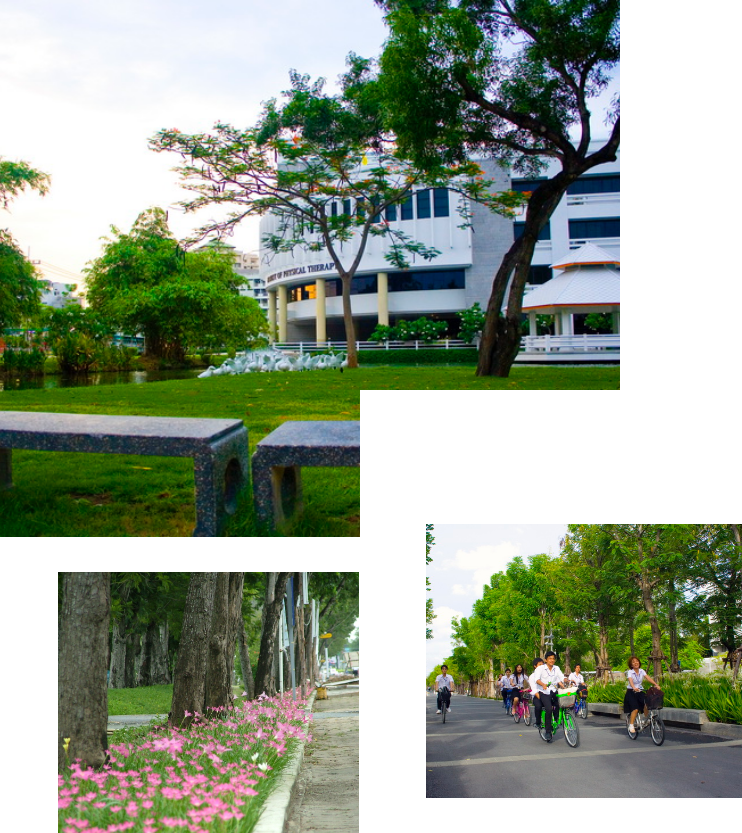
At present, the university has taken action on becoming a sustainable university by spearheading the Mahidol University Sustainability Action according to the 17 Sustainable Development Goals (17 SDGs), which is a framework of global development in the United Nations general assembly, together to achieve goals of sustainable social development, economic, and environment. Mahidol University also setting the “9 to Zero” plan to reduce greenhouse gas emissions within the university to net zero within 9 years or by 2030, with emphasis on promoting the maintenance of green areas and increasing green areas both inside the building and around the outside of the building to absorb greenhouse gases.
As Mahidol University, Salaya has a large number of flora species and water sources, a balance between conservation and development is required. There is, therefore, a clear designation of environmental conservation, green spaces, and development area by maintaining no less than 70 percent of spaces and green areas of the total area, according to the University Master Plan, to support green spaces environment and maintain prolific conservation areas full of species of plants. The original ecosystem would be preserved if each area was retained as much as possible, while expanding green spaces in new areas by planting more trees, developing unused lands, building exterior, balconies, roof deck, and interior halls, horizontally or vertically. Adding green spaces is a university policy that promotes sustainable physical development in order to increase green space which play a role in carbon capture and storage and improve biodiversity which an important factor in solving ecosystem problems and the decline of species. In addition, green spaces also create beautiful scenery, raise environmental awareness, reduce heat while adding more fresh air, absorbing and filtering air pollution, and create landmarks for the university. All of these are approaches to resolving long-term environmental issues.
According to statistics from Mahidol University's Green Space Survey study in 2022, the
university has more than 7,281 rai of forest and green space, this area is made up of:
1) Kanchanaburi Campus has an area of 6,000 rai, where the mixed deciduous forest covers
the most of the land. The formerly agricultural area and it is now being transformed
into green space by planting trees to restore deteriorated.
2) Nakhon Sawan Campus has an area of 381 rai was formerly utilized for agriculture. The
entire area is a mixed forest and the geological characteristics are limestone
mountains. Most of the area is still densely forested.
3) Amnat Charoen Campus has an area of 338 rai. Most of the area is sandy and has
sandstone. The area is a combination of mixed deciduous forest and deciduous dipterocarp
forest.
4) Salaya Campus has 562 rai that can store more than 106,597 tons of carbon dioxide
equivalent in greenhouse gases.
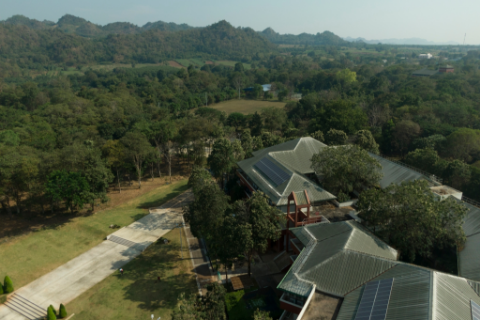
Kanchanaburi Campus
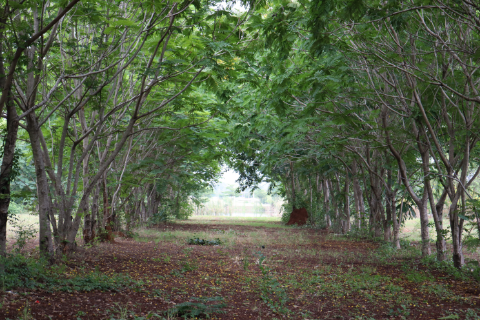
Nakhon Sawan Campus
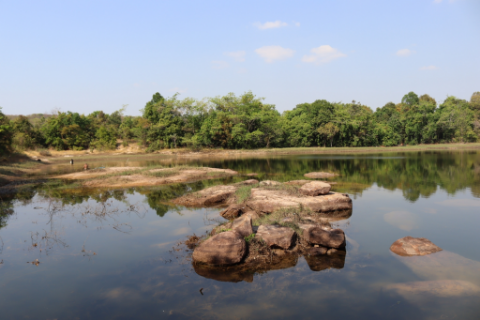
Amnat Charoen Campus
There is an example of green spaces in the university:
- Sireeruckhachati Nature Learning Park has an area 37 rai where a Thai herbal plants conservation for study and research. There are more than 600 species of Thai herbs were collected.
- Mahidol Eco Park located in front of Mahidol University Library and Knowledge center. There is a green area in the center of the education zone, with an area of approximately 6 rai (9,600 square meters) to accommodate activities and learning outside the classroom, create new options for teaching and learning outside the classroom, promoting the image of being an integrated learning and living center surrounded by nature and a place to relax.
- Chaofaa Garden has an area is 11,800 square meters, located between Mahidol Learning Center and Prince Mahidol Hall.
- Mahidol Court has an area approximately 4,500 square meters, located between Faculty of Science and Faculty of Social Sciences and Humanities.
- Office of the President Court has an area approximately 5,000 square meters, located between Office of the President and International College.
- White Duck Court has an area approximately 4,000 square meters, located in front of the Faculty of Physical Therapy.
- The area surrounding the building such as green area around the Mahidol Learning Center building.
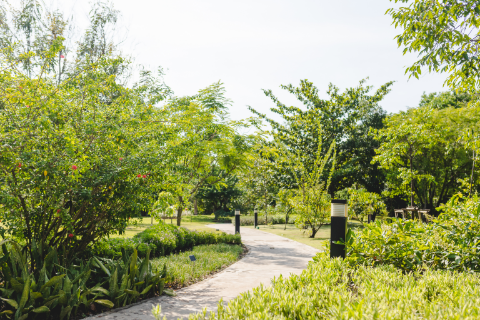
Sireeruckhachati Nature Learning Park
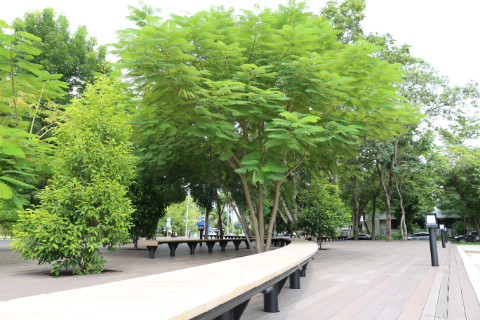
Mahidol Eco Park
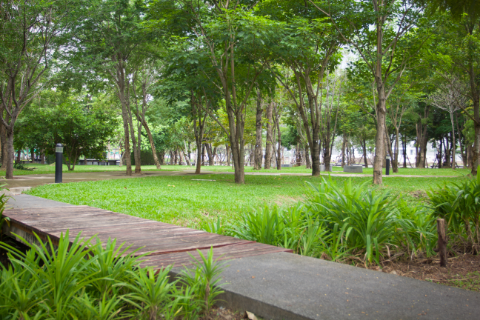
Chaofaa Garden
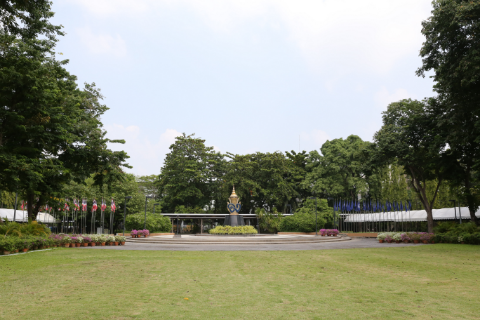
Mahidol Court
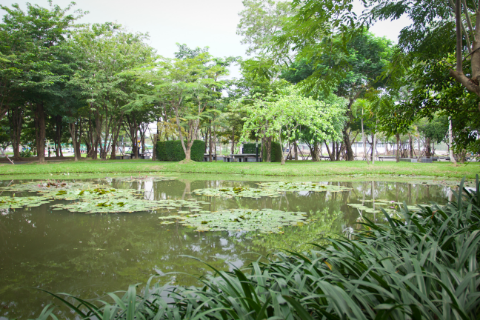
Area surrounding Mahidol Learning Center
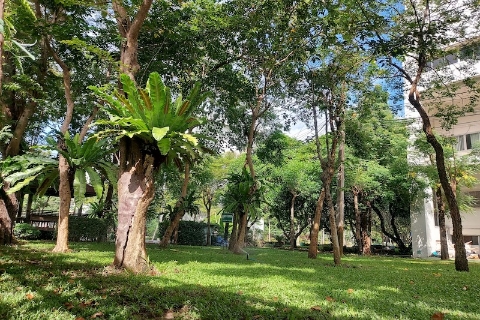
Area surrounding Division of Physical Systems and Environment
The campus of Mahidol University, Salaya contains various types of both vertical and horizontal gardens, in the common areas and university departments, providing notable landmarks for pedestrians, promoting a relaxed atmosphere, and creating a conducive learning environment for students.

1.Bhumibhol Adulyadej-Bhra Sirindhorn Building, Faculty of Nursing. Concrete tracks on the structure surrounding a specially designed building that containing soil and rooting materials for cork trees.
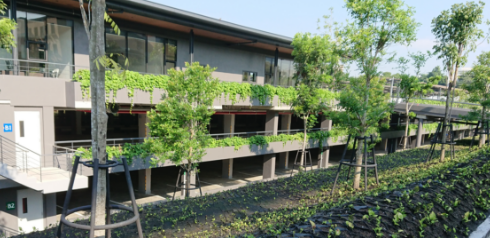
2.Prince Mahidol Parking Building has concrete rails installed in safety rails around the building, built-in design that contain skyflowers.
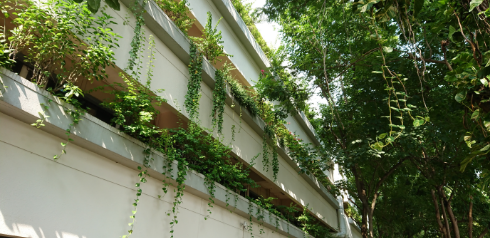
3.Building 3 and 4, Faculty of Sciences (front of the buildings) have concrete rails on canopies around the buildings, built-in design that contain various plant species.
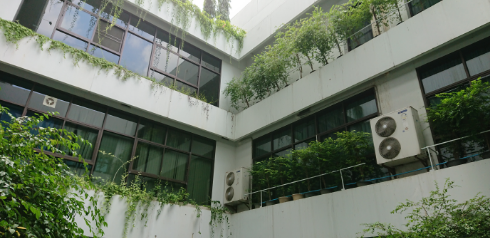
4.Veterinary General Instruction and Operational Building, Faculty of Veterinary. Planting pots containing various small plants are put along with the canopies and central court.
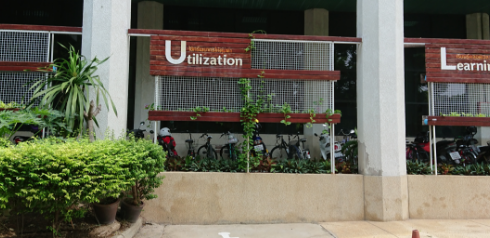
5. Mahidol University Library (front of the building) contains a vertical garden with a metal structure that contain climbing plants and small pots i.e., golden pothos.
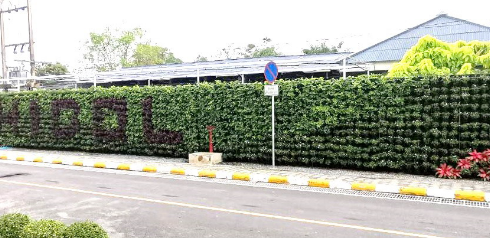
6. The vertical garden in front of a plant nursery, opposite parking lot 3, is installed with an automatic watering system and geotextile attached to the metal structural wall of the previous fence line of the MU Garden. This vertical garden stands 2.4 meters tall and 37 meters long, including bromeliads, creeping foxgloves, gardenia crape jasmine, aerva sanguinolenta, and a miniature umbrella tree.
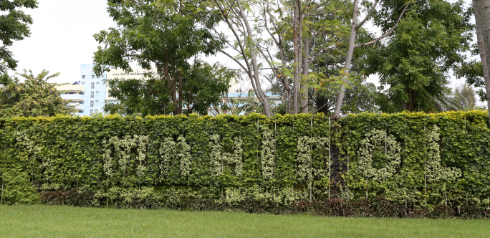
7. The vertical garden next to parking lot 4 at White Duck Court and the Withi Panya roundabout. The idea behind the vertical garden is to use a variety of plants, such as Aerva sanguinolenta, Pachira aquatic, Mistletoe Fig, Variegata, Golden Dewdrop, and Miniature Umbrella Plant. These vertical gardens are fixed to a steel frame that measures 3.30 meters in height and 21.98 meters in length, with an automatic watering system.
The university also promotes development of unused spaces and present green spaces to be in accordance with educational, sports, and recreational activities while being balanced building element, especially on activity areas and walkways. Water resources areas are developed to allow Mahidol members to have more interaction with the nature in their activities, promoting life quality, nice and safe atmosphere in workplace. There are landscapes, parks with a variety of plants. including indigenous plants, medicinal plants and plants for research studies, creating signature and suitable for historical, cultural, and architectural areas, and eventually create sustainable usage of unused and green spaces to be a model for communities and society, and be in accordance with the Sustainable Development Goals SDG11: Sustainable Cities and Communities, SDG13: Climate Action, and SDG15: Life on Land.
